When Siemowit I died suddenly in 1262, Masovia faced a crisis. His son was still a child, and the state needed a firm hand. It was then that Perejesława stepped onto the scene – a little-known but exceptionally determined princess. For several years, it was she who wielded power, balancing between the ambitions of neighboring dukes. Who was this remarkably warrior-like woman?
Daughter of the King of Rus
Perejesława was most likely born between 1218 and 1230 as the daughter of one of the most influential figures of medieval Rus – Prince Daniel Romanovich, who was the only member of the Romanovich dynasty to receive the title of King of Rus. Although historians had long been convinced that she was the daughter of Daniel and Anna, daughter of Mstislav Mstislavovich, contemporary research questions this origin. It is suggested that she may have descended from a different circle of Rurikids, perhaps from families of Smolensk or Vladimir-Suzdal princes who were allied with Daniel Romanovich.
Perejesława’s father was truly an extraordinary figure by 13th-century standards. This enlightened ruler made Chełm the capital of his principality, where he erected the Orthodox Basilica of the Nativity of the Blessed Virgin Mary entirely of brick, which was a true architectural phenomenon in this part of Europe at that time. For finishing, he used local glauconite – blue-green limestone and marble, and laid glazed tiles on the floor, which clearly indicated Byzantine influences and testified to the prince’s modernity.
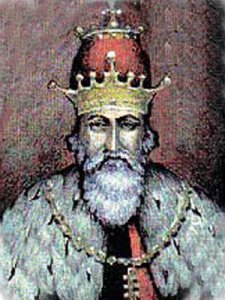
Daniel reunited the lands of Galicia-Volhynia, and around 1251 founded the defensive fortress of Lviv, named after his son Lev. It was in such an environment – at a sophisticated court, open to Western civilization and Byzantine influences – that young Perejesława grew up, which undoubtedly influenced her later political and diplomatic abilities.
With Siemowit I
The marriage between Masovian Duke Siemowit I and Perejesława took place in 1247 or 1248, probably at the inspiration of Siemowit’s older brother – Duke Bolesław I of Płock and Daniel Romanovich himself. The union was intended to strengthen the friendship between the Masovian dukes and the Rurikid dynasty, especially in the face of common threats from Yotvingian and Lithuanian tribes.
For young Perejesława, marriage meant a radical change of life – from the refined Galician court she moved to harsh Masovia, where completely different customs prevailed and where she had to adapt to the realities of a principality constantly threatened by invaders from the north. Siemowit I, being the sixth son of Conrad I of Masovia and his wife Agafia of Rus, took over rule in the southern part of Masovia in 1247, and after his brother Bolesław’s death in 1248, he united the entire Masovian principality under his authority.
The marriage of Siemowit and Perejesława produced three children: Salomea (born between 1248 and 1262, later a nun in the convent at Skała), Conrad II (born around 1250), and Bolesław II (VI), born after 1251. Until 1262, Perejesława remained in her husband’s shadow, concentrating her attention on raising her sons and daughter. Sources have preserved no information about her earlier political or economic activity, which suggests that in accordance with contemporary customs, she primarily fulfilled the role of wife and mother.
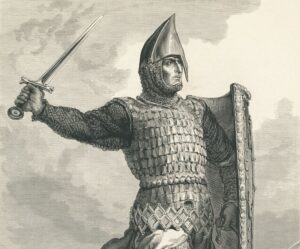
The Drama at Jazdów
Perejesława’s peaceful family life ended dramatically in June 1262. Lithuanians under Prince Trojnat’s command, along with Ruthenian reinforcements, invaded Masovia and besieged the fortress of Jazdów, where Siemowit was stationed with his eldest son Conrad II. The well-garrisoned fortress had a chance to defend itself, but among Siemowit’s warriors was a traitor – one Goszcz, who opened the gates of Jazdów to the Lithuanians.
During the bloody fighting, the invaders managed to capture Siemowit himself. The duke was killed on June 23, 1262, and his body was burned. The fortress went up in flames, and Conrad II was taken into Lithuanian captivity, from which he returned only after several years.
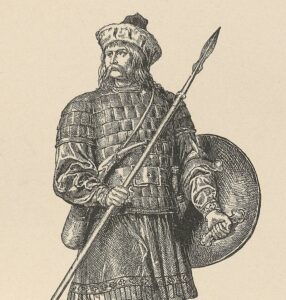
The unexpected death of her husband Siemowit I and the imprisonment of her elder son Conrad II initiated Princess Perejesława’s regency. She exercised „prudent rule” over all of Masovia, bringing about the reconstruction of the principality devastated by the Lithuanian raid in a short time.
Perejesława’s Regency
Perejesława’s regency is generally evaluated positively by historians. Initially, Bolesław the Pious helped her in governance, but over time the administration of the entire principality rested solely in the princess’s hands. None of the Masovian nobles opposed her rule, and no one attempted to undermine her authority as regent.
Perejesława had advisors who supported her in making specific decisions regarding current policy in Masovia. Due to lack of sources, it is difficult to determine to what extent the princess’s decisions were independent and to what extent she relied on the opinions of her closest circle. The advisors to Siemowit I’s wife were: cupbearer Grot, judge Gedko, castellan Nicholas, treasurer Goworek, deputy cupbearer Wyszota, master of the hunt Przybysław, and chaplains: Przybysław, Severin, Florian, and Lawrence. Voivode Niemierza, who had begun his career during her husband’s lifetime, also played an important role in her circle.
Like other princess regents, Perejesława used her own seal. This was the so-called „sigillum authenticum”, a seal with full legal force (bearing the image of the Blessed Virgin Mary with Child, holding a scepter in the form of a lily). The inscription on the seal „S PEREISZLAVE DVCISSE MAZOUIE” indicated the woman’s authority over all of Masovia.
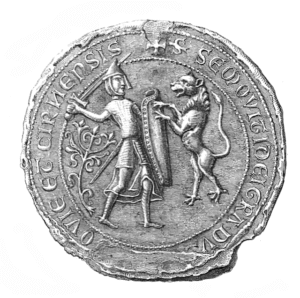
Enemy Raids
Perejesława accomplished quite a lot for Masovia. She worked to free subjects taken captive by invaders and initiated settlement campaigns in depopulated areas. She brought settlers to Masovia from Prussian and Yotvingian lands. Prussian settlement concentrated mainly around Płońsk, Wyszogród, and Zakroczym. The Yotvingians were settled in localities such as Jaciążek, Jaćwieżyno, and Jatwież.
The widow of Siemowit I defended Masovia like a lioness against raids by foreign tribes that chronically harassed Masovian lands during her regency. In 1263, Yotvingians and Lithuanians under Komat’s command appeared in Masovia. In the same year, Perejesława’s domains were also visited by Prussians and Ruthenians, who devastated the Łowicz castellany.
A year later (1264), Cracow Duke Bolesław the Chaste successfully struck against the Yotvingians, killing one of their leaders in the process. There is no indication in the sources that Masovian forces participated in this expedition, which could have been an excellent opportunity to take revenge for the destruction wrought by the pagans within this principality. However, Perejesława did not take advantage of this opportunity. Why she did not do so, we unfortunately do not know.
In later years as well, attackers did not spare Masovia. In 1266 – as stated in the „Greater Poland Chronicle” – Prussians devastated the Płock lands. A year later (1267), the same pagans burned Ciechanów. In 1269, Lithuanian forces came into action, which, passing through Masovia, reached Kuyavia for the first time in history. Some historians believed that Perejesława entered into arrangements with the Lithuanians so that they would treat her domain as a typically transit area, which due to the destruction wrought in the course of previous raids no longer presented such value to the attackers.
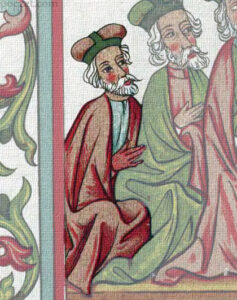
Conflict of the Ruler’s Sons
Perejesława had to observe not only how foreign armies destroyed her principality, but also how her sons, Conrad II and Bolesław II, fought each other. This must have caused her great pain, but she was unable to prevent the spilling of fraternal blood. The division of the paternal inheritance between Conrad and Bolesław took place around 1270. The former received eastern Masovia and part of the Czersk lands with Czersk, Pułtusk and Zakroczym. The latter received the rest of the inheritance with Płock and Wyszogród. According to historians, Perejesława could have agreed to such a division, considering it fair.
At the same time, Perejesława continued to care for the younger of her sons, Bolesław, until the end of the 1270s, even though he had long since reached the age of majority. She appeared as co-issuer of some documents, which proves that she had not withdrawn from active political life. Politics had apparently so entered her blood that she could not give it up. She most likely still had enough strength to engage in it, although she undoubtedly had to take her son’s opinion into account.
Everything indicates that Perejesława also actively supported the actions of Conrad II, who aspired to take power in Lesser Poland. Unfortunately, his candidacy, faced with open opposition from Cracow nobles, ultimately failed, which he and his mother had to accept. It is possible that Perejesława’s son, disappointed by the turn of events, persuaded the Lithuanians in 1277 to invade the Łęczyca lands belonging to Leszek the Black, whom Bolesław the Chaste had anointed as his successor instead of Conrad. Whether Perejesława knew about her son’s conspiracies with the pagans cannot be determined today.
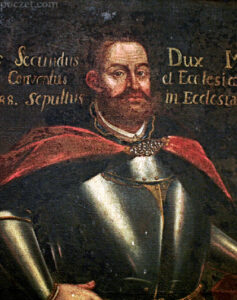
During the discussed period, Perejesława must have lost sleep over the conflict of her sons, who spared no means to eliminate each other. Their struggles were followed not only by almost all of Poland, but also by neighboring countries, from which they received necessary political and military support. In the course of fighting with his brother, Bolesław II benefited from the support of Wladysław the Elbow-high and his half-brother Leszek the Black. Conrad II, in turn, cooperated mainly with Perejesława’s cousin Vladimir Vasilkovich.
The struggles between the feuding brothers intensified in 1279, after Bolesław II entered into an official alliance with Lithuania by marrying Gaudemunda Sophia, daughter of Grand Duke Trojden of Lithuania. This was the first marriage of a Piast ruler with a Lithuanian woman, coming from a pagan country whose inhabitants, despite Mindaugas’s acceptance of baptism (1251), still professed the faith of their ancestors. Such a marriage could not please the Polish Church, which persecuted heretics, nor Perejesława, who, given her origin, preferred to maintain the best possible relations with the rulers of Rus.
Final Years of Life
Perejesława did not live to see the reconciliation of Conrad II and Bolesław II. We do not know whether she did anything to make her sons lay down their arms and unite their forces in the fight against a common enemy (such as the Lithuanians). Scholars indicate that the princess withdrew from political life after 1279 and settled in the Sochaczew lands, which constituted her widow’s portion, and presumably from there observed her sons’ actions. It is difficult to determine whether she then favored one of them by actively supporting him, or whether she was already tired of the ongoing civil war, whose outcome no longer concerned her at all.
Perejesława’s reaction to Bolesław’s actions is unknown. In 1281, he invaded Ujazdów, which remained under Conrad II’s control, from where he abducted his sister-in-law Jadwiga and his ten-year-old niece Anna. It is only known that Conrad, in an act of revenge, struck at his brother’s lands and, with Ruthenian support, managed to take several hundred prisoners.
What Siemowit’s wife did after 1281, we do not know. No source account has survived that could shed even a ray of light on her activities during this time. Certainly by 1283 the princess was no longer alive. The date of her death (1283) was recorded in his chronicle by Jan Długosz, who in this particular case could have used a lost Masovian source, which strengthens the value of the information he left behind. The death of Perejesława was also mentioned by the author of the necrology of the abbey in Lubiń, as the princess was a benefactor of the provostry in Jeżów, a branch of the Lubiń monastery.
No information has survived in the sources about where and when Perejesława was buried. The cause of her death is also unknown. We cannot even determine whether her feuding sons were present at the funeral ceremonies, or whether she was escorted to eternal rest in an intimate circle, without family. The last years and months of her life are completely lost in the darkness of history.
Bibliography
-Gieysztor A., Działania wojenne Litwy w roku 1262 i zdobycie Jazdowa, „Zeszyty Naukowe WAP, Seria Historyczna” 1967, nr 15.
-Rukat M., Siemowit I Mazowiecki. Książę trudnego pogranicza (ok. 1215 – 23 czerwca 1262), Kraków 2018.
-Sielicki F., Kontakty polsko-ruskie w świetle źródeł XIII wieku, „Studia Polono-Slavica-Orientalia. Acta Litteraria” 1974, t. 1.
-Świeżawski A., Siemowit I, książę Mazowsza i ziemi czerskiej, [w:] Polski słownik biograficzny, t. 37, Warszawa–Kraków 1996.
-Szweda A., Polityka Siemowita I mazowieckiego wobec zakonu krzyżackiego po 1254 roku, „Rocznik Grudziądzki” 2003, t. 15.
Marcus Renfell
Marcus Renfell is a historian driven by curiosity and passion. He refuses to accept the “safe,” polished versions of the past. Instead, he brings forgotten, overlooked, and distorted stories back to life. His work blends scholarly precision with the art of storytelling, turning historical narratives into vivid, page-turning experiences.
His mission is simple: to prove that history can be gripping, alive, and deeply personal.
His debut book: Women of Science. Stories You Were Never Told
In his first publication, Marcus Renfell shines a light on the remarkable women who shaped the world of science — both the pioneers whose names we know and the brilliant minds history forgot. It’s an inspiring journey through untold stories, groundbreaking achievements, and the resilience of women who changed our understanding of the world.
👉 Discover Women of Science. Stories You Were Never Toldon Amazon.com.
- Marcus Renfell
- Marcus Renfell
- Marcus Renfell
